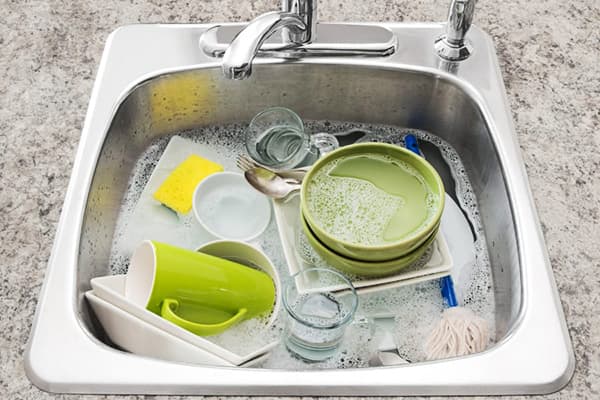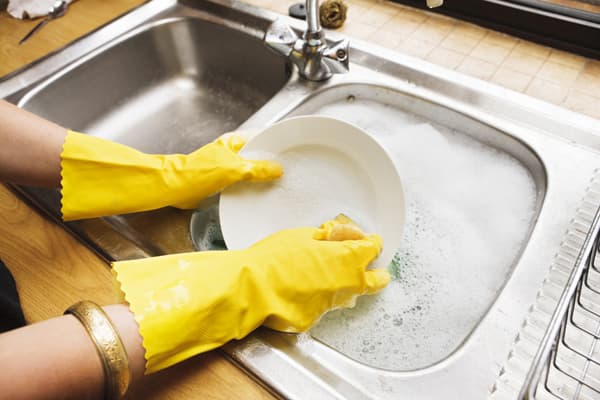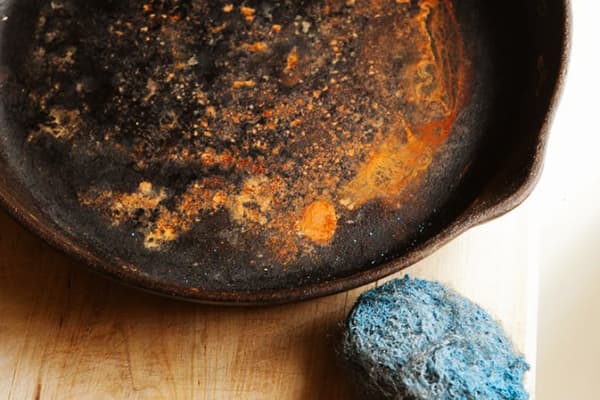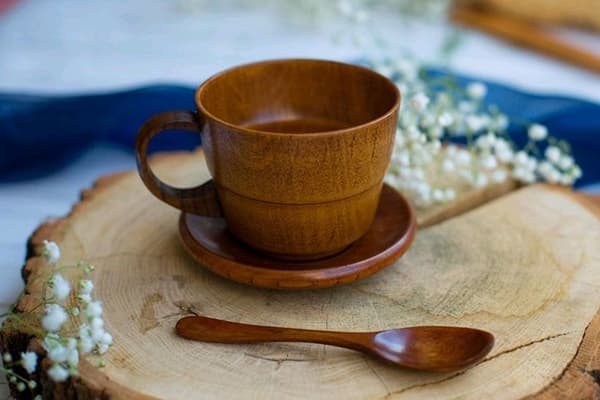Soaking dishes - pros and cons
Not knowing, how to wash dishes properly, we spoil it every day. Meanwhile, some products do not want contact with water or only a certain temperature for soaking dishes is suitable. So do plates and pots need to be subjected to this procedure? We invite you to find out its pros and cons.

Why do you soak dishes?
By soaking, food residues, plaque, soot, and dirt are softened and swollen. In this form, they come off the walls of pots and plates more easily. If the cleaning solution is warm, the grease from the pans will dissolve better.
Most often, dishes are soaked if they are burnt or very dirty, and also when it is not possible to wash them immediately. For example, everyone knows that it is difficult to wash a plate after buckwheat porridge without soaking: the grains dry quickly and stick firmly to the surface.
In restaurants and cafes, dishes are soaked in a solution of soda ash - and only then they are washed in soapy water, rinsed and dried.
pros
Soaking is an effective way to prepare items before cleaning. Housewives often use it when washing dirty laundry, when washing vegetables from the garden, herbs, and cereals. Undoubtedly, it provides certain benefits when washing dishes.
Let's list all the pros:
- Saves detergent consumption. Most types of dirt can be removed with plain water after soaking. A minimum of detergent is required, mainly for disinfection.
- Saves energy and time.The dishes are cleaned with one movement of the hand. There is no need to scrub it or use hard brushes and sponges.
- Allows you to wash dishes better. As already mentioned, after soaking, dirt is removed faster and easier. The procedure allows you to clean complex stains - remove carbon deposits, remove yellow deposits and sticky food residues.
- Helps cope with large volumes of dishes. There’s a reason professional kitchens use soaking sinks. This approach to business allows you to wash the plates as quickly as possible. The dishes got wet - I immediately washed them and put them back into use.
Maintain the order. Place plates, pans, and pots to soak. Meanwhile, wash cups, shot glasses, knives, cutting boards, spatulas and other items that do not require soaking.
Minuses
As you know, a coin has two sides. On the one hand, soaking increases the efficiency of cleaning dishes, but on the other hand, it can cause damage.
Let's look at the arguments against:
- Cracks and deformation of the walls of pots and pans. Many people don’t think twice about it and place the dishes in water immediately after removing them from the stove. Products often deteriorate due to temperature changes.
- Destruction of the protective layer. Some types of cookware have a layer that prevents burning and rust. For example, cast iron products have an oil (fat) coating. Soaking destroys it, and food begins to stick and burn during cooking.
- Corrosion. Cast iron deteriorates from prolonged exposure to water. And even stainless steel can rust if it is not of very good quality.
- Reproduction of harmful microorganisms. A moist environment with food residues is fertile ground for the proliferation of infections and molds.
To wash burnt dishes, you need to sprinkle baking soda on the affected areas and fill it to the top with warm water. In this form it should stand for 2 hours. Then you should walk along the walls with a brush. You will see how easily the carbon deposits come off.
Results
So, should you soak your dishes or not? Soaking has advantages, but there are also disadvantages. Mainly, the procedure can cause harm to a certain type of product. The rest of the dishes can be soaked.
There are 5 rules to follow:
- Do not place pots and pans that have not yet cooled down into water. The optimal temperature for soaking dishes is 30–40 degrees.
- Remove any remaining food before soaking. It is unacceptable for them to float in the water and pollute it.
- Soak greasy plates after fish or other “odorous” foods in a separate container, or better yet, wash them immediately.
- Do not leave dishes in water for a long time. The optimal time is 10 minutes. Within 4 hours it will be full of germs. There is no need for a source of infection in the house.
- Use warm soapy water, not water. It removes dirt better and faster, bacteria multiply less, and greasy deposits dissolve more easily.
To brighten glassware, bleach enamel pots, ceramic plates and mugs, soak them in Whitener. Add the product to the water at the rate of 1 tbsp. spoon for 1 liter of hot water. After 15–20 minutes, the solution can be poured into the toilet or bathtub, where it will still do a useful job. The dishes should be thoroughly rinsed with warm water and left to air. The smell of chlorine will soon dissipate.
What should not be soaked - list
In order not to spoil your kitchen utensils, you should know exactly what can be soaked and what cannot. The list needs to be memorized or hung in the kitchen in front of your eyes.
Avoid soaking the following utensils:
- cast iron frying pans;
- bamboo plates and mugs;
- wooden cutting boards;
- wooden spatulas;
- knives;
- products with glued parts.
If you soaked a cast-iron frying pan and the food began to burn on it, spread it with animal fat or vegetable oil and bake it in the oven for 2 hours. The porous material will be saturated and will again perform its functions.
So, soaking dishes helps housewives. But it would be unwise to use it for absolutely any kitchen utensil. You need to know which products can be soaked, which ones cannot, and how to do it correctly. Listen to the advice outlined above, and your dishes will serve faithfully for many years, and caring for them will not be difficult!



